Previous Page | Right click this page to print.
High Moisture Forages - Silage
Silage is a high-moisture forage; 60 to greater than 70% moisture. Silage is produced from the controlled fermentation of high-moisture forages. Silage is harvested at optimal stages of forage growth and fed as necessary. Given appropriate management, ensiled forages are a palatable feedstuff with a high nutritional value. Silage is primarily fed to beef and dairy cattle.
Figures 9.11 and 9.12 illustrate beef cattle and dairy cattle, respectively,
consuming rations containing silage.
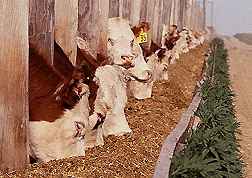
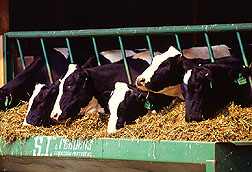
Ensiled forages may also be fed to sheep and horses. Across species, silage
will produce favorable production results. To maximize the dry-matter
intake of silage, ensile forages at the minimum moisture levels required
for the ensiling process. Grass and legume forages and corn and sorghum
grain crops, as well as various crop surpluses and residues may be effectively
ensiled. Silage is an effective harvesting method to maximize the yield
of digestible nutrients per unit of land.
Ensiling refers to the process in which high-moisture forages are harvested
in the field, loaded into a structure, and anaerobic fermentation by microorganisms
preserves the nutrients in the forage. The primary factors influencing
the efficiency of the ensiling process are the physical and chemical properties
of the forage, establishment and maintenance of an anaerobic environment,
composition and activity of the population of microorganisms, and management
of feed-out. Given proper management, the duration of the ensiling period
is approximately two to three weeks. The ensiling process and feeding
of the silage may be divided into four phases.
Phase one is the aerobic phase and begins immediately after forage harvest.
Plant enzymes and aerobic microorganisms will convert organic materials
to carbon dioxide, water, and heat. The primary nutrients metabolized
in this phase are nonstructural carbohydrates and proteins. Extended duration
of phase one may result in excessive nutrient loss and excessive heating
of the forage. Phase one decreases the nutritional value of the forage,
therefore establishment and maintenance of anaerobic conditions in the
ensiling structure is essential to maximize nutritional value of the forage.
Phase one is completed with the establishment of anaerobic conditions.
Given proper management, phase one will be completed in less than six
hours.
Phase two is the initial anaerobic fermentation of the ensiled forage.
During phase two, acetic acid producing microorganisms predominate. Acetic
acid producing bacteria ferment nonstructural carbohydrates to acetic
acid. Acetic acid functions as an energy source for the ruminant and also
to reduce the pH to approximately 5.0. Reduction of the pH will inhibit
the acetic acid producing microorganisms and set up phase three. Under
ideal conditions, the duration of phase two is one to three days.
Phase three is the characterized by the growth of the lactic acid producing
microorganisms. During phase three, lactic acid producing bacteria ferment
nonstructural carbohydrates to lactic acid. Lactic acid is the most desirable
of the acids. Lactic acid is a strong acid. In addition, lactic acid can
be used as an energy source for ruminants. Lactic acid is also palatable
for ruminants. Phase three is completed when the production of lactic
acid has decreased the pH of the forage to 4.0-4.5, inhibiting the growth
of microorganisms, and therefore effectively preserving the nutrients
in the forage. The pH and the composition of acids in silage are two indicators
of efficiency of fermentation and quality of silage. The optimal pH for
grass silage and corn silage is approximately 4.5 and 4.0, respectively.
In a high-quality silage, lactic acid is the predominant acid in a high-quality
silage; 4-8% of the silage dry-matter. An excessive level of butyric acid
is an indicator of a lower quality silage.
Phase four is the feed-out phase; the period of time in which silage is
unloaded from the ensiling structure and fed. During the feed-out phase,
the ensiled forage is exposed to oxygen and oxygen initiates secondary
aerobic degradation of the forage by microorganisms and will also facilitate
the growth of yeast and fungi. During the feed-out phase it is essential
to minimize the duration of time from exposure to oxygen to animal consumption,
to minimize secondary degradation and maximize nutritional value of the
ensiled forage.
Initially, the forages are harvested or cut in the field.
Figure 9.13 illustrates corn silage being cut, chopped, and transferred
to a forage wagon in the field.
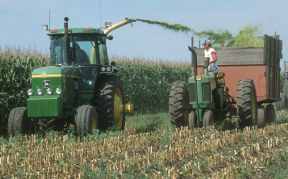
As with other harvested forages, harvesting at the appropriate stage of
maturity is essential to maximize yield of digestible nutrients per unit
of land. Table 7-20 on page 147 of the text describes the harvest maturity
for optimum ensiling for the various forages.
In addition, the decision regarding harvest accounts for moisture and
nonstructural carbohydrate content of the forage. Appropriate moisture
content improves the efficiency of microbial fermentation, aids in the
establishment of anaerobic conditions, and minimizes seepage. Optimal
moisture content at ensiling varies by type of silo and forage species.
Table 7-21 on page 148 describes methods to estimate the moisture content
of forage. Table 7-20 on page 147 describes an acceptable range of moisture
at ensiling for the various forages.
Figure 9.14 describes the associated losses at various moisture levels
with the various ensiling structures.

Dependent on moisture level, silage is classified as direct-cut silage,
70% or greater moisture, wilted silage, 60-70%, or low-moisture silage;
40-60% moisture. In general, corn and other grain crops are direct-cut
silage; harvested and immediately ensiled. In contrast, grasses and legumes
are generally harvested, allowed to wilt in the field to the predetermined
moisture content, and then ensiled.
Figure 9.15 illustrates wilted forage being collected, chopped, and transferred
to a wagon in the field.
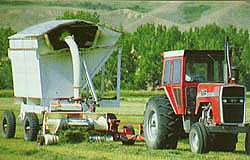
The nonstructural carbohydrate content of the forage influences the efficiency
of the ensiling process. Nonstructural carbohydrates are the primary substrate
for acid production by the microorganisms during the ensiling process.
Optimal forage maturity at harvest will promote adequate levels of nonstructural
carbohydrates.
Next, the forage is chopped, transported to the ensiling structure, and
ensiled. Chopping promotes the exclusion of oxygen from the forage in
the ensiling structure and therefore decreases the time required for establishment
of an anaerobic environment. In general, the optimal length of chop is
¼ to ½". Optimal length of chop is determined by the
type of forage, ensiling structure, and the rate of silage inclusion in
the animal ration. Tables 7-20 on page 147 describes the recommended length
of cut or chop for the various forages. Effective loading and packing
of the ensiling structure is essential to establish and maintain anaerobic
conditions and therefore set up the entire ensiling process. Loading will
also influence unloading of the silage. The ensiling structure should
be loaded rapidly, continuously, and consistently. The forage should also
be packed consistently and sealed rapidly. The specific method varies
with ensiling structure.
Four common ensiling structures are vertical, conventional silos (also
known as tower silos), vertical, oxygen-limiting silos, horizontal, bunker
silos, and bag silos. Vertical oxygen-limiting silos are used to store
high-moisture grains and low-moisture forages.
Figure 9.16 illustrates a vertical, conventional silo (on the right) and
a vertical, oxygen-limiting silo (on the left).
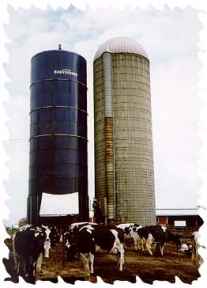
Figure 9.17 illustrates a horizontal, bunker silo.
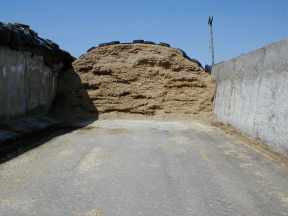
Figure 9.18 illustrates silage being bagged.

Regardless of the specific type of ensiling structure, the ensiling structure
must provide for establishment and maintenance of an anaerobic environment
and efficient loading, packing, and unloading of the forage. Proper sizing
of the ensiling structure is essential; dimensions of the silo are influenced
by factors such as loading, packing, and unloading of the silage, quantity
of forage fed per day, and duration of time the forage will be fed.
In general, vertical silos minimize feed losses and loading and unloading
is relatively efficient. The initial capital investment for the facility
and equipment is high. Horizontal silos require a relatively low capital
investment in facilities and equipment, loading and unloading is relatively
labor-intensive, and have the potential for high feed losses. Bag silos
are bags made of heavy plastic. Capital investment is relatively low,
feed losses are minimal, and loading and unloading is relatively labor-intensive.
To maximize the yield of digestible nutrients, it is important to minimize
losses associated with silage production. The average losses associated
with silage production are 15-25% of the total dry-matter of the forage
in the field. As a result of the moisture content of the forage, generally,
losses associated with harvesting and handling are minimal. Primary losses
associated with silage production are associated with the fermentation
stages of the ensiling process, storage of the forage, and the feed-out
phase. Table 7-22 on page 149 provides a summary of harvesting methods
for alfalfa including associated losses.
Additives may be added to the ensiled forage to improve the ensiling process
and the nutritional value of the ensiled forage. Silage additives are
not required to produce a high-quality ensiled forage. Silage additives
are not a substitute for proper silage management. In general, additives
may be classified as nutrients, chemical preservatives, or biological
agents.
NPN and other protein sources may be added to feeds low in crude protein
and high in energy to increase the crude protein content of the ensiled
forage. Fermentable carbohydrate sources such as grains and molasses may
be added to feeds low in energy and high in crude protein to improve the
efficiency of the ensiling process. Preservatives are chemical compounds
such as organic acids that reduce the degradation of crude protein and
carbohydrates, especially in direct-cut silages. In addition, various
chemicals such acids are added to inhibit select microorganisms and to
maintain the nutritional value of the forage. Bacterial cultures containing
lactic acid producing microorganisms are added to the ensiled forage to
promote establishment of and fermentation by lactic acid producing microorganisms.
Microbial enzymes may also be added to ensiled forages to increase the
quantity of nutrients available for fermentation of the forage.
The nutritional value of silage may be evaluated via sensory and analytical
methods. Sensory evaluation includes use of visual, tactile, and olfactory
senses. High-quality silage has a bright, crisp color, a firm texture,
has a clean, acidic odor, and is absent from antinutritional factors and
contaminants. And in addition to standard forage analyses, the pH, the
composition of acids and the nitrogen component may be also be analyzed
to estimate nutritional value of the forage.
In the U.S., corn is the most popular ensiled forage.
Figure 9.19 illustrates a field of corn silage.
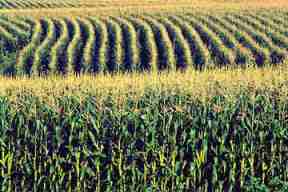
Figure 9.20 illustrates corn silage being harvested.
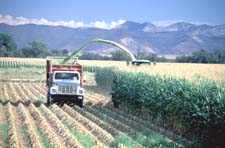
Corn silage has favorable characteristics associated with crop production,
nutritional value, and feeding value. As a crop, corn silage produces
a high yield of digestible nutrients per unit of land. Corn silage is
a source of structural carbohydrates and nonstructural carbohydrates (e.g.
energy) for ruminants. In general, corn silage is high to moderate in
digestible energy and low to moderate in crude protein. On a dry-matter
basis, the TDN and crude protein concentrations of corn silage are 65-75%
and 8-9%, respectively. As energy is a primary component of corn silage,
forage producers should manage the forage to maximize the energy yield
per unit of land. The average NDF and ADF content is 51% and 28%, respectively.
Corn silage is a very palatable feedstuff. To maximize the nutritional
value of corn silage requires addition of protein, mineral, vitamin, and
potentially, energy supplements to the ration.
Management factors influencing the yield of digestible nutrients of corn
silage include hybrid selection, fertilization, maturity at harvest, and
harvest, storage, and feeding management. Stage of maturity at harvest
influences yield and digestibility of nutrients as well as ensiling characteristics.
Optimum stage of maturity at harvest is identified by the location of
the milk line. The milk line is the line in the kernel separating the
liquid and solid portions of the kernel.
Figure 9.21 illustrates the various milk lines.
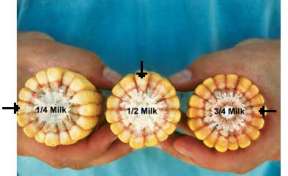
Figure 7.16 on page 155 of the text describes the kernel milk line (e.g.
maturity) and expected dry-matter yields. As the corn plant matures, the
milk line moves from the outside to the inside of the kernel. Table 7-33
describes the plant composition and energy yields of whole plant corn
silage harvested at three different maturities. Optimal stage of maturity
to harvest corn to maximize energy value of the silage, optimize moisture
content for ensiling, and maximize animal consumption, is when the milk
line is one-half to two-thirds down the kernel. At this stage of maturity,
the moisture level of the plant will be from 65-70%. Table 7-20 describes
the optimal chop size for corn silage. To improve the nutritional value
of corn silage, corn silage may also be processed. Corn processors disrupt
the physical structures and reduce the physical size of the particles
of the plant, increasing the nutritional value of the corn silage.
Additional ensiled forages include sorghum, grasses, legumes, small grains,
and crop residues and surpluses. While the nutritional value and various
specifics regarding silage production will differ, the basic principles
of silage production also apply to these forages.
Ensiling of forage may also be a means to manage specific forage issues.
For forages with high levels of nitrate, prussic acid, and various other
compounds ensiling will reduce the amounts of these compounds. In addition,
for legumes, ensiling will reduce the opportunity for bloat.
Previous Page | Right click this page to print.